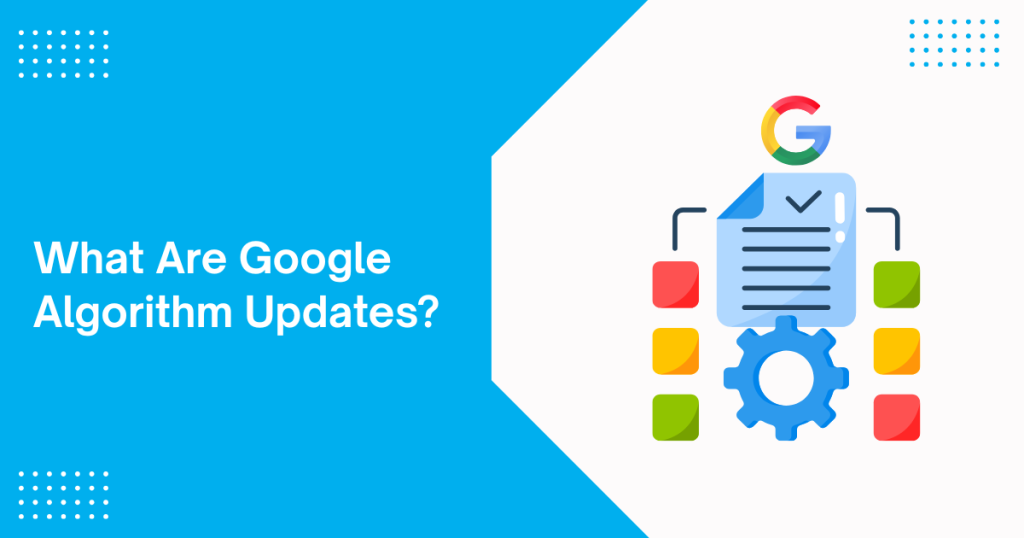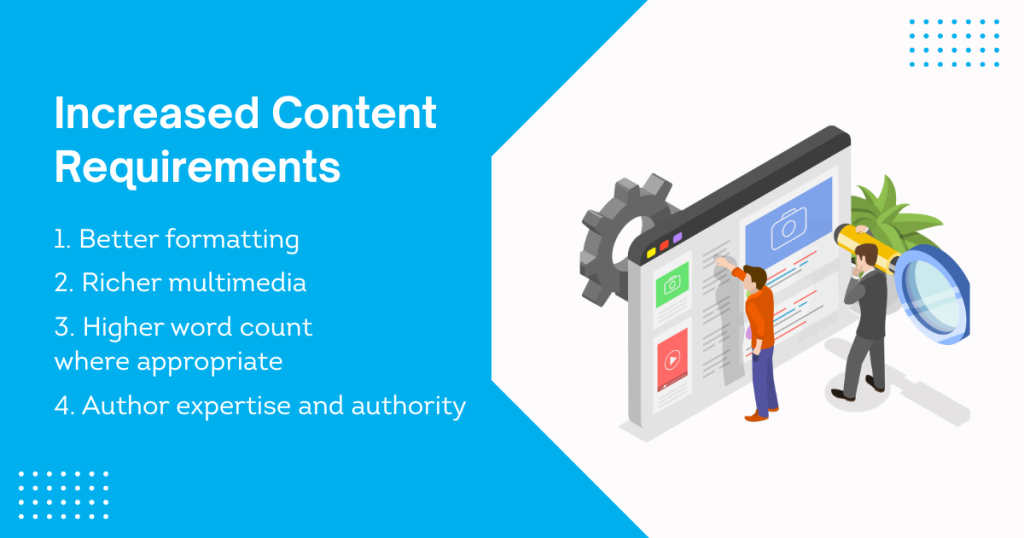Google, as the world’s most widely used search engine, plays an integral part in driving this change. Google regularly makes algorithm updates designed to enhance user experiences, provide more accurate search results and combat black-hat SEO practices – these changes may benefit users but they could significantly impact websites that rely heavily on organic search traffic.
Understanding Google’s algorithm changes is vital to maintaining visibility, driving traffic and expanding growth for any blog. In this blog, we’ll delve deep into what these algorithm updates entail, their effect on your blog and strategies you can employ in order to stay ahead.
What Are Google Algorithm Updates?

Google’s algorithm is an intricate system designed to extract information from its search index and return results instantly for any query submitted. To ensure accuracy and quality, frequent algorithm updates from minor tweaks to major upgrades are deployed by the company.
These updates often target:
Content Quality, Relevance of Information, Backlink Quality and Mobile Usability/Page Speed are the four major updates known by Google: Panda, Penguin, Hummingbird, BERT and Helpful Content Update are just a few examples that have had an effective transformation to how blogs and websites rank in search results.
Major Algorithm Updates and Their Impact
1. Google Panda (2011)
Panda was intended to lower the rankings of “thin,” low-quality content such as content farms or pages with little original information, such as blogs focusing on quantity over quality. Blogs focused on quantity over quality were particularly affected.
Effect:
Blogs that utilised duplicated content experienced a loss in rankings.
Keyword stuffing and poor readability were penalized.
Emphasis shifted toward providing high-quality, in-depth content.
2. Google Penguin (2012)
Penguin targeted websites engaging in manipulative link-building tactics such as buying backlinks or participating in link schemes.
Impact:
Blog sites with spammy backlinks saw their rankings decrease dramatically.
Organic link building quickly became a top priority.
3. Hummingbird (2013)
Hummingbird focused on understanding the context and intent behind each query rather than matching keywords directly.
Effect: It’s Blogs that optimised their posts with keyword intent that performed better.
Semantic search and conversational content have seen significant advancements.
4. Google BERT (2019)
Google’s Bidirectional Encoder Representations from Transformers (BERT) solution helped it better comprehend language and search queries than ever before.
Impact:
Blogs that feature useful, natural-sounding content were more likely to receive higher rankings.
Keyword stuffing became even less effective as time passed.
5. Helpful Content Update (2022)
Impact:
This update places greater emphasis on creating content written for humans rather than search engines.
Blogs designed purely to increase SEO company saw their rankings decline significantly.
Content tailored for users became essential.
How These Updates Affect Your Blog
1. Traffic Fluctuations
An algorithm change’s most noticeable repercussion is an abrupt jump or drop in blog traffic, as core updates typically favour blogs offering superior user experiences, while penalising those publishing outdated or irrelevant posts.
2. Search Ranking Changes
Your blog’s keyword rankings could change drastically over time. Posts that used to appear at the top could now find themselves lower on search engine pages due to meeting new algorithmic criteria.
3. Increased Content Requirements

With a focus on quality and relevance, Google demands more from your blog posts. This includes:
Better formatting
Richer multimedia
Higher word count where appropriate
Author expertise and authority
4. Focus on E-A-T (Expertise, Authoritativeness, Trustworthiness)
Particularly after the Medic update, blogs that demonstrate E-A-T rank better. This is crucial for YMYL (Your Money or Your Life) topics, like health, finance, and legal advice.
5. Mobile-First Indexing and Speed Optimisation
Google’s emphasis on mobile usability means your blog must be mobile-friendly and fast-loading. Pages that fail to meet these standards may be penalised.
How to Adapt and Thrive
1. Stay Informed About Updates
Follow Google Search Central, SEO blogs, and digital marketing forums to stay updated. Awareness helps you prepare and respond quickly when changes happen.
2. Conduct Regular Content Audits
Review old blog posts for:
Outdated information
Broken links
Thin or duplicated content
Update, combine, or remove underperforming pages to maintain quality.
3. Focus on Quality Over Quantity
A well-researched, in-depth blog post will always outperform dozens of low-quality ones. Invest time in:
Original research
Visuals (images, infographics, videos)
Actionable takeaways
4. Improve On-Page SEO
While content quality is king, technical SEO still matters. Ensure:
Proper use of headers (H1, H2, H3)
Optimised meta tags and descriptions
Use of schema markup
Internal linking structure
5. Build High-Quality Backlinks
Focus on earning backlinks from reputable sites through guest posting, partnerships, and quality content. Avoid link farms or low-authority directories.
6. Enhance User Experience (UX)
Design your blog with users in mind:
Responsive and clean design
Fast load time
Easy navigation
Clear calls to action
7. Leverage Analytics and Tools
Use tools like:
Google Search Console
Google Analytics
SEMrush or Ahrefs
PageSpeed Insights
These help you monitor performance, identify issues, and adjust strategy accordingly.
Conclusion
Google’s algorithm changes can feel intimidating, especially if you’ve seen your blog traffic plummet overnight. But these updates are designed to create a better, more helpful internet. If you focus on providing genuine value to your readers, creating quality content, and maintaining technical excellence, you can not only survive algorithm updates—you can thrive through them.
Remember, blogging is a long-term game. Google rewards consistency, value, and user-centric content. So stay informed, stay flexible, and most importantly, stay focused on your readers.







